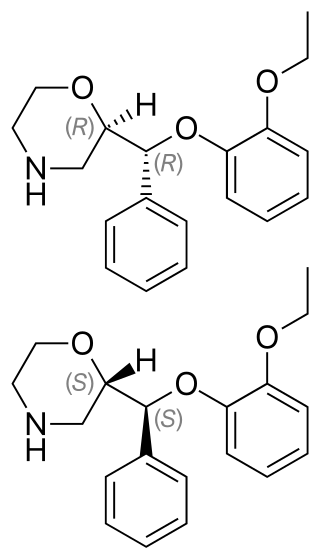Alternative medicine

Most alternative therapies do not have enough supporting evidence to recommend them. [222] [223] Moreover, when only the best conducted studies are taken into account results tend to be similar to placebo. [223]
Neurofeedback
Neurofeedback (NF) or EEG biofeedback is a treatment strategy used for children, adolescents and adults with ADHD. [224] The human brain emits electrical energy which is measured with electrodes. Neurofeedback alerts the patient when beta waves are present. This theory believes that those with ADHD can train themselves to decrease ADHD symptoms.[ citation needed ]
No serious adverse side effects from neurofeedback have been reported. [225] Research into neurofeedback has been mostly limited and of low quality. [225] While there is some indication on the effectiveness of biofeedback it is not conclusive: several studies have yielded positive results, however the best designed ones have either shown reduced effects or non-existing ones.[ failed verification ] [225] [226] In general no effects have been found in the most blinded ADHD measures, which could be indicating that positive results are due to the placebo effect. [227]
Media
Preliminary studies have supported the idea that playing video games is a form of neurofeedback, which helps those with ADHD self-regulate and improve learning. [228] [229] Memory, multitasking, fluid intelligence, and other cognitive talents may be improved by certain computer programmes and video games. [230] On the other hand, ADHD may experience great difficulty disengaging from the game, which may in turn negate any benefits gained from these activities, [231] and time management skills may be negatively impacted as well. [232]
Nature
Children who spend time outdoors in natural settings, such as parks, seem to display fewer symptoms of ADHD, which has been dubbed "Green Therapy". [233] But it may be due to reverse causation.[ clarification needed ]
Diet
There is insufficient evidence to support dietary changes in ADHD and thus they are not recommended by the American Academy of Pediatrics as of 2019. [234] Perhaps the best known of the dietary alternatives is the Feingold diet which involves removing salicylates, artificial colors and flavors, and certain synthetic preservatives from children's diets. [235] However, studies have shown little if any effect of the Feingold diet on the behavior of children with ADHD. [236]
Results of studies regarding the effect of eliminating artificial food coloring from the diet of children with ADHD have been very varied. It has been found that it might be effective in some children but as the published studies have been of low quality results can be more related to research problems such as publication bias. [237] The UK Food Standards Agency (FSA) has called for a ban on the use of six artificial food colorings [238] and the European Union (EU) has ruled that some food dyes must be labeled with the relevant E number as well as this warning: "may have an adverse effect on activity and attention in children." [239] Nevertheless, existing evidence neither refutes nor supports the association between ADHD and food colouring. [240]
Dietary supplements, self-medication, [241] and specialized diets are sometimes used by people with ADHD with the intent to mitigate some or all of the symptoms. However a 2009 article in the Harvard Mental Health Letter states, "Although vitamin or mineral supplements [micronutrients] may help children diagnosed with particular deficiencies, there is no evidence that they are helpful for all children with ADHD. Furthermore, megadoses of vitamins, which can be toxic, must be avoided." [242] In the United States, no dietary supplement has been approved for the treatment for ADHD by the FDA. [243]
Some popular supplements used to manage ADHD symptoms:
- Caffeine – ADHD is associated with increased caffeine consumption, and caffeine's stimulant effects on cognition may have some benefits for ADHD. [244] Limited evidence suggests a small therapeutic effect that is markedly inferior to standard treatments like methylphenidate and dextroamphetamine while still producing similar or greater side effects. [244] [245]
- Nicotine – The association between ADHD and nicotine intake is well known, and limited evidence suggests that nicotine may help improve some of the symptoms of ADHD, although the effect is generally small. [246] [247] [248]
- Omega-3 fatty acids – There is no evidence that supplementation with omega-3 or other polyunsaturated fatty acids provides any improvement in the symptoms of ADHD in children or adolescents. [249] A 2011 meta analysis found a "small but significant benefit", with benefits being "modest compared to the efficacy of currently available pharmacological treatments for ADHD". [250] The review concluded that supplementation may be worth consideration as an augmentative treatment in combination with medication due to its "relatively benign side-effect profile", but not as a primary treatment. [250] Most research on omega-3 fatty acids is considered to be of very poor quality with widespread methodological weaknesses. [249] [250]
- Zinc – Although the role of zinc in ADHD has not been elucidated, there is a small amount of limited evidence that lower tissue zinc levels may be associated with ADHD. [251] In the absence of a demonstrated zinc deficiency (which is rare outside of developing countries), zinc supplementation is not recommended as a treatment option for ADHD. [252]
- In the 1980s vitamin B6 was promoted as a helpful remedy for children with learning difficulties including inattentiveness; however, a study of large doses of vitamins with ADHD children showed that they were ineffective in changing behavior. [253]
Exercise
Regular physical exercise, particularly aerobic exercise, is an effective add-on treatment for ADHD in children and adults, particularly when combined with stimulant medication (although the best intensity and type of aerobic exercise for improving symptoms are not currently known). [254] [255] [256] The long-term effects of regular aerobic exercise in ADHD individuals include better behavior and motor abilities, improved executive functions (including attention, inhibitory control, and planning, among other cognitive domains), faster information processing speed, and better memory. [254] [255] [256] Parent-teacher ratings of behavioral and socio-emotional outcomes in response to regular aerobic exercise include: better overall function, reduced ADHD symptoms, better self-esteem, reduced levels of anxiety and depression, fewer somatic complaints, better academic and classroom behavior, and improved social behavior. [254] Exercising while on stimulant medication augments the effect of stimulant medication on executive function. [254] It is believed that these short-term effects of exercise are mediated by an increased abundance of synaptic dopamine and norepinephrine in the brain. [254]












